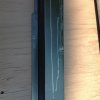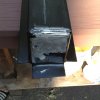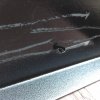A
airmenair
Hi all,
This is my first post. I am new to painting and I have a question about cold weather application of SPI epoxy primer.
Over the winter I was prepping floor pans for installation in my car. Being my first time really spraying paint of any kind on this car I figured floor pans would be a good place to try first. I live in the Northeast and I have an unheated garage. I was paranoid about cold weather application so I followed the instructions closely. Since I was spraying individual panels I built a foam board “oven” with a heat lamp attached. I would warm the parts up, spray them and then put the cover back on and “bake” them. I’d verify with a infrared thermometer that the surface temp was above 65 before spraying. I think the hottest the surface got was ~150. Once they were dry enough to handle I would bring them inside the house and put them in the warmest spot I could find. House temperature hovers right around 65F.
Aside from all the cold weather prep I think I was pretty diligent with the bare metal surface prep.
So with all that said, how can I tell if I got a good cure on the primer and it’s adhering to the metal well?
Thanks all. Glad to be a part of the forum.
Emile
This is my first post. I am new to painting and I have a question about cold weather application of SPI epoxy primer.
Over the winter I was prepping floor pans for installation in my car. Being my first time really spraying paint of any kind on this car I figured floor pans would be a good place to try first. I live in the Northeast and I have an unheated garage. I was paranoid about cold weather application so I followed the instructions closely. Since I was spraying individual panels I built a foam board “oven” with a heat lamp attached. I would warm the parts up, spray them and then put the cover back on and “bake” them. I’d verify with a infrared thermometer that the surface temp was above 65 before spraying. I think the hottest the surface got was ~150. Once they were dry enough to handle I would bring them inside the house and put them in the warmest spot I could find. House temperature hovers right around 65F.
Aside from all the cold weather prep I think I was pretty diligent with the bare metal surface prep.
So with all that said, how can I tell if I got a good cure on the primer and it’s adhering to the metal well?
Thanks all. Glad to be a part of the forum.
Emile




